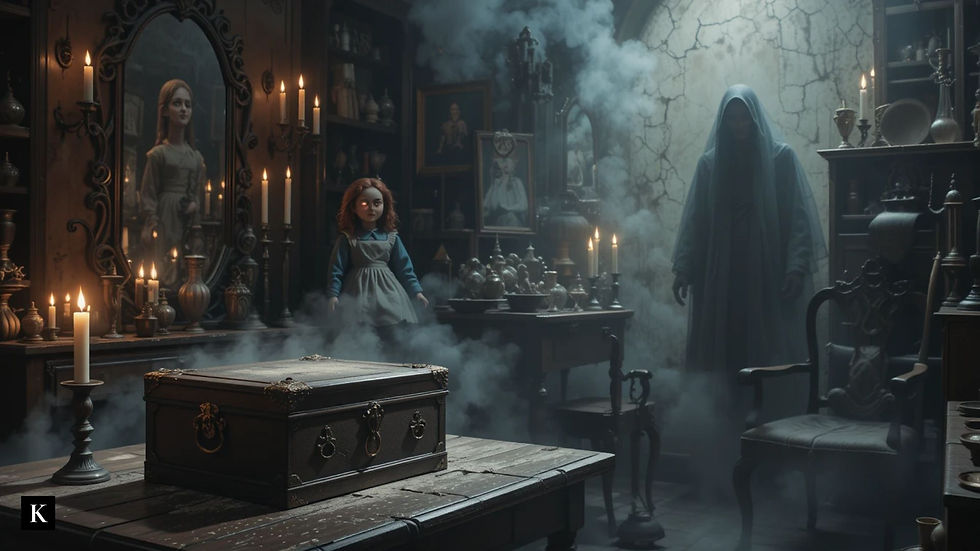Trans-Allegheny Lunatic Asylum: Know the Horrifying Story Behind the Creepy Abandoned Asylum!
- Kavisht

- Jun 20, 2020
- 3 min read
Updated: Jan 5, 2023

People say that they hear the innocent roaring screams and the clanking of steel cages. They can see the whitish-grey faces of the once wallowing patients. These stories are the tip of the iceberg of all that are yet to be revealed. All these occurred at the infamous Trans-Allegheny Lunatic Asylum located in West Virginia, United States.
Ideology and Design of the Asylum
This asylum was built in the mid-1800s; it was the brainchild of Thomas Story Kirkbride, a doctor, and crusader for the mentally ill. His ideology of treatment for the mentally ill patients was theoretical at best. Nevertheless, his practice was still seen to be much more humane than the others at that point.
He designed the structure to be more open, allowing the inclusion of light, fresh air, and cross breezes wherever possible. He emphasized freedom for patients. He felt that the patients must walk around, which will help stimulate their minds. These design ideas inspired the creation of 73 hospitals across the country. And these included the Trans-Allegheny Lunatic Asylum in Weston.
The asylum opened its door in 1863, renamed the West Virginia Hospital for the Insane. It could house 250 patients, each with their own comfortable room. The grounds of the asylum were impressive; they had a working farm, dairy, a gas well, and even a cemetery. It was all in all a self-sufficient facility designed to represent a new home for the patients.
Also read: The House of Death - Bone Chilling Glimpse of Mark Twain & ghosts Haunting America over a Century!
The Disaster
In 1881, the number of mental health cases around the country increased exponentially. Due to the huge stigma surrounding mental health at the time, the Trans-Allegheny Lunatic Asylum found itself overcrowded with patients. About 500 patients, more than the hospital could take, flooded its gates.
The asylum could not keep up with the changing times and the influx of patients coming in. This is when the conditions drastically started to decline for the asylum. The authorities stuffed patients into single rooms, sometimes up to 5 or 6 patients living in one room.
The produce made on the grounds, farm, and dairy, also could not keep up with the influx, causing several patients to suffer from malnutrition. This only worsened the mental health problems that the patients came in with.
Almost 60 years went by, now the asylum was 6 times overcapacity. The patients were running around the facility unattended. The patient to staff ratio was horribly high. As a result, there were not enough orders to handle the number of patients. At its peak, the asylum held about 2600 patients, a number more than 10 times of what it could hold.
The Horror
The Charleston Gazette, a newspaper company, sent in a crew to investigate and expose the terrible conditions inside the asylum. The information they gathered was perplexing. The patients were sleeping on the floor throughout the asylum. There was no furniture, and the patients were literally freezing from the absence of heat and warmth.
The overpopulation had caused a severely overworked and overloaded staff. Hence the emphasis on cleanliness and order had reduced. Ugly brownish-black sludge covered the bog and bright windows, darkening the inside and hence freezing the rooms even more. The wallpaper had come off, animals like scratches all over the walls caused by the patient's panic and condition.
The horror still continued. Doctors put the patients assigned as “unstable” into cages in open spaces in an attempt to free up some space in the rooms. The asylum had also become the perfect place for experimental lobotomies. A lobotomy advocate and surgeon, Walter Freeman, was famous for his “ice pick” method. He opened a shop in the facility to perform several lobotomies and leave many patients with cognitive damage.
The Aftermath
The news article the Gazette rolled out caused a huge movement to shut down the asylum for good. The Trans-Allegheny Lunatic Asylum finally shut its doors in 1994. The facility was made for the prosperity and growth of the mentally unstable patients. It remained just a disgusting reminder of horror and tragedy.
In 2007 the government transformed the building into a makeshift museum. People can come and visit the asylum firsthand. Ghost hunters and the most frequent visitors have inevitably felt the presence of spirits around them. It appears as if the dead people have walked beyond their graves and now emanate from the building walls. While people are skeptical about this, the asylum will remain in the history of Weston and of West Virginia forever.
Also read: LaLaurie Mansion: Story Behind the Most Haunted House of The USA | Truth About its Haunted Mystery!
Plan a Horror Next Time & Share the Stories among Friends!




























